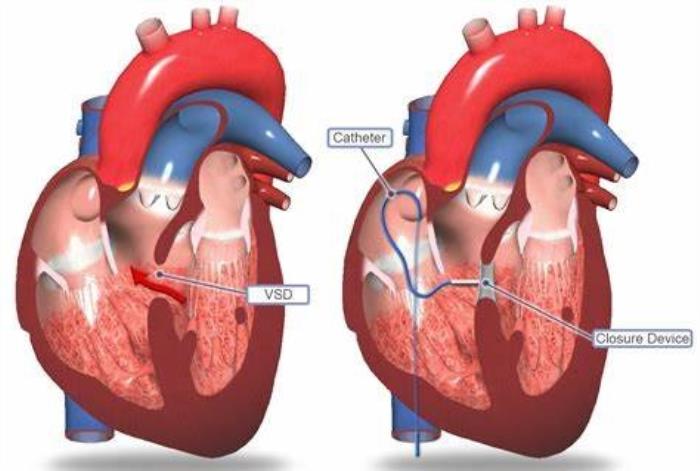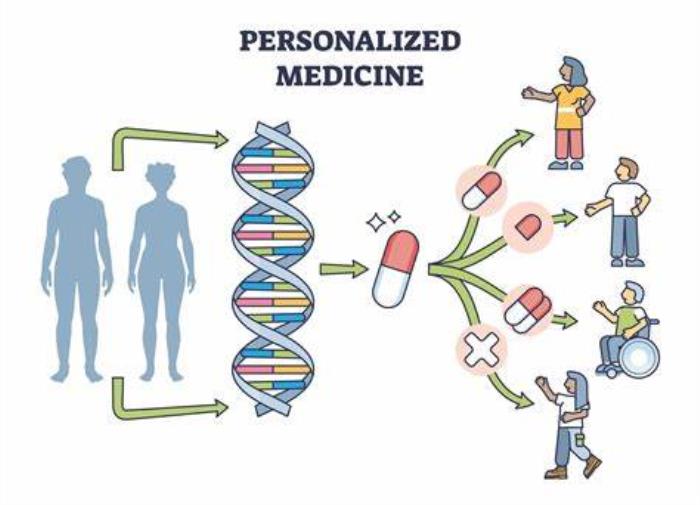The field of Ventricular Septal Defect (VSD) surgery has undergone significant advancements over the years, resulting in improved outcomes for patients. Initially, open-heart surgery was the primary method of repairing a VSD, but with the development of minimally invasive techniques, robotic-assisted surgeries, and more advanced closure devices, the approach to VSD repair has evolved. These innovations have not only improved the precision and safety of the procedure but have also reduced recovery times and minimized surgical risks, making treatment more accessible and effective for patients of all ages.
What is VSD Surgery? A Brief Overview of the Procedure
Ventricular Septal Defect (VSD) surgery is a procedure performed to repair a hole in the wall (septum) that separates the heart's two lower chambers, the left and right ventricles. The goal of the surgery is to close the defect and restore normal blood flow, preventing complications such as heart failure, pulmonary hypertension, and delayed growth in children. Traditionally, this surgery was done via an open-heart procedure, where a large incision was made in the chest, and the heart was temporarily stopped while the defect was repaired.
Key Advancements in Surgical Techniques for VSD Repair
Over the years, surgical techniques for VSD repair have evolved to become more refined and less invasive. One of the most significant advancements is the development of minimally invasive approaches that reduce the need for large incisions. Surgeons now often perform the procedure using small incisions and advanced tools, such as video-assisted thoracoscopic surgery (VATS), to access the heart. This approach not only reduces the risk of infection and complications but also shortens the hospital stay and recovery time for patients.
Minimally Invasive Approaches in VSD Surgery: Benefits and Challenges
Minimally invasive surgery for VSD repair offers numerous benefits, including smaller incisions, reduced scarring, and faster recovery. Patients who undergo minimally invasive procedures typically experience less pain, a lower risk of infection, and a quicker return to normal activities. However, this approach comes with its own set of challenges. It requires specialized training and experience from the surgeon, and not all patients are candidates for minimally invasive surgery, particularly if the VSD is large or located in a difficult-to-reach area of the heart.

Robotic-Assisted VSD Surgery: Enhancing Precision and Reducing Recovery Time
Robotic-assisted surgery is one of the most recent advancements in the field of VSD repair. Using robotic arms controlled by the surgeon, this technique offers enhanced precision and control during the procedure. The robotic system allows surgeons to perform highly complex repairs through small incisions, resulting in minimal tissue damage and faster recovery. This approach is particularly beneficial in pediatric patients or those with smaller anatomies, where traditional surgery might be more difficult. Robotic-assisted surgery also allows for better visualization of the heart's structures, improving the overall success rate of the surgery.
The Role of 3D Imaging in Surgical Planning for VSD Repair
The integration of 3D imaging technology in surgical planning has significantly improved the accuracy and effectiveness of VSD repair procedures. Surgeons can now use detailed 3D models of the heart to precisely locate the VSD and plan the best approach for its closure. These models can be created from echocardiography, CT scans, or MRI images, providing a comprehensive view of the heart's anatomy. This technology helps guide the surgeon during the operation, reducing the likelihood of complications and improving patient outcomes.
How New Closure Devices are Changing the Landscape of VSD Surgery
Innovative closure devices have revolutionized the treatment of certain types of VSDs, especially in cases where traditional surgery may not be necessary. Transcatheter devices, which can be delivered via a catheter inserted into a blood vessel, allow for non-surgical closure of the defect. These devices are particularly useful for small to moderate VSDs and offer a less invasive alternative to open-heart surgery. The development of advanced stent-like closure devices has expanded the options available for VSD treatment, offering patients a quicker recovery time and a lower risk of complications.
Advances in Suturing Techniques for Improved VSD Closure
Recent advancements in suturing techniques for VSD closure have significantly improved the success rates of surgery and reduced recovery time. New methods, such as using specialized sutures and knot-tying techniques, help ensure a more secure and durable closure of the ventricular septal defect (VSD), reducing the risk of residual leaks and enhancing long-term outcomes. These innovations allow for more precise and effective repair, particularly in challenging cases.
The Use of Biocompatible Materials in VSD Surgical Repair
The development of biocompatible materials for VSD repair has been a significant breakthrough in minimizing the risk of rejection and complications. Materials like synthetic patches, biological grafts, and tissue-engineered constructs are designed to integrate seamlessly with the heart’s natural tissues, promoting better healing, reducing inflammation, and minimizing the risk of infection or scarring. This advancement has allowed for more successful closures in complex VSD cases.
Innovations in Surgical Tools and Equipment for VSD Surgery
The evolution of surgical tools and equipment has greatly enhanced the precision and safety of VSD surgery. Advanced instruments, such as robotic-assisted systems, improved suturing devices, and high-definition cameras, allow surgeons to operate with greater accuracy. These tools reduce the need for larger incisions, resulting in less tissue damage, lower infection rates, and quicker recovery times for patients.
The Impact of Personalized Medicine on VSD Surgical Outcomes
Personalized medicine is making its way into VSD surgery by tailoring treatment plans to individual patients based on genetic profiles, medical history, and specific heart conditions. This approach allows for more precise surgical planning, including the choice of materials and techniques best suited for each patient. Personalized medicine also enables better management of post-surgical care, ensuring more successful outcomes and fewer complications.

Advances in Anesthesia Techniques to Improve Patient Safety During VSD Surgery
Anesthesia techniques have improved significantly in recent years, with the introduction of more effective and safer drugs, as well as advanced monitoring systems. These innovations allow for better control of anesthesia during VSD surgery, reducing the risk of complications such as hypoxia, arrhythmias, and hemodynamic instability. Additionally, the development of regional anesthesia options provides patients with enhanced post-surgery recovery experiences, including reduced pain and faster mobilization.
The Growing Role of Hybrid Surgery in Complex VSD Cases
Hybrid surgery, which combines traditional open surgery with minimally invasive techniques, is gaining traction in the treatment of complex VSDs. This approach allows surgeons to address multiple issues in one procedure, such as repairing the VSD while also correcting associated defects, reducing recovery time and the need for multiple surgeries. Hybrid techniques can also be particularly useful for patients with challenging anatomical conditions or those who are not ideal candidates for conventional surgery.
Post-Surgery Care Improvements: Faster Healing and Better Recovery
Advances in post-surgery care, including enhanced recovery protocols and better pain management strategies, have contributed to faster healing and improved outcomes for VSD patients. New techniques, such as early mobilization, use of non-opioid pain relief methods, and more individualized rehabilitation plans, promote quicker recovery and reduce the risk of complications. These improvements help patients return to normal activities sooner and with fewer long-term effects.
Reducing Risks of Complications with New VSD Surgical Approaches
New surgical approaches, such as minimally invasive techniques and advanced closure devices, have significantly reduced the risk of complications following VSD repair. These techniques cause less trauma to surrounding tissues, resulting in reduced blood loss, a lower risk of infection, and quicker recovery times. Additionally, new closure methods help ensure a more effective seal, reducing the risk of residual defects or leakage after surgery.
The Integration of Artificial Intelligence in VSD Surgical Decision-Making
Artificial intelligence (AI) is being integrated into VSD surgical decision-making by analyzing patient data, imaging results, and surgical outcomes to predict the best course of action. AI can help surgeons plan the most effective surgical approach based on individual patient factors, improving precision and reducing errors. Additionally, AI-powered tools assist in real-time decision-making during surgery, enhancing outcomes and reducing the risk of complications.
New Research and Trials: What’s on the Horizon for VSD Surgery?
Ongoing research and clinical trials are focusing on improving surgical techniques, exploring innovative closure devices, and investigating the use of regenerative medicine for VSD repair. Some exciting areas of development include the use of stem cell therapy to regenerate damaged heart tissue, new biomaterials for VSD closure, and advancements in robotic-assisted surgery. These advancements are expected to improve the precision and effectiveness of VSD surgeries, reducing the need for repeat procedures and improving long-term outcomes.
How Innovation in VSD Surgery is Changing Long-Term Outcomes for Patients
Innovations in VSD surgery, including improved techniques, materials, and post-operative care, are transforming long-term outcomes for patients. These advancements have led to fewer complications, quicker recovery times, and a better quality of life for patients after surgery. With better management of both the surgical procedure and post-operative care, patients are experiencing fewer complications such as arrhythmias or heart failure, which improves their overall prognosis.
Cost-Effectiveness of Latest Innovations in VSD Treatment
While the latest innovations in VSD surgery, such as robotic-assisted techniques and advanced closure devices, may come with higher upfront costs, they offer long-term savings by reducing the likelihood of complications, repeat surgeries, and prolonged hospital stays. Additionally, these advancements often lead to quicker recoveries, which can reduce healthcare costs associated with extended treatment and rehabilitation.
Conclusion: The Future of VSD Surgery and What Patients Can Expect
The future of VSD surgery looks promising, with ongoing innovations in surgical techniques, tools, and post-operative care. Patients can expect less invasive procedures, faster recovery times, and better long-term outcomes. Personalized medicine and artificial intelligence will continue to play a major role in improving surgical planning and decision-making, ensuring that each patient receives the best possible care. With these advancements, the prognosis for VSD patients is continually improving, offering hope for better, healthier futures.
Best VSD Surgery in India
The Best VSD Surgery in India offers effective treatment for ventricular septal defects, helping improve heart function and quality of life for patients with congenital heart defects.
Best VSD Surgery Hospitals in India
The best vsd surgery hospitals in india are equipped with advanced cardiac care facilities and specialized pediatric teams, providing comprehensive care from diagnosis through recovery.
VSD Surgery Cost in India
The vsd surgery cost in india is affordable and transparent, offering high-quality care and accessible options for patients at leading hospitals.
Best VSD Surgeons in India
The Best VSD Surgeons in India are experts in congenital heart defect repairs, providing precise and compassionate care tailored to each patient’s unique needs.
FAQ:
What are the latest advancements in VSD surgery?
Recent advancements in VSD surgery include minimally invasive techniques, robotic-assisted surgery, personalized medicine, and the use of biocompatible materials for repair. These innovations lead to better outcomes, faster recovery, and fewer complications.
How does robotic-assisted surgery improve outcomes in VSD repair?
Robotic-assisted surgery allows for greater precision, smaller incisions, and less trauma to surrounding tissues. This results in quicker recovery times, reduced risks of infection, and improved surgical outcomes.
What are the benefits of minimally invasive VSD surgery?
Minimally invasive surgery reduces the size of the incision, resulting in less pain, faster recovery, and lower risk of infection. It also reduces the time spent in the hospital and allows for a quicker return to normal activities.
How do new closure devices impact VSD surgery success?
New closure devices, such as advanced patches and closure plugs, provide more effective sealing of the VSD, reducing the risk of residual leaks or complications after surgery. These devices also enhance the durability of the repair and improve long-term outcomes.
What is the role of personalized medicine in VSD surgery?
Personalized medicine tailors the surgical approach to the individual patient’s genetic profile, heart condition, and overall health. This allows for more precise and effective treatment, resulting in better surgical outcomes and more successful recovery.